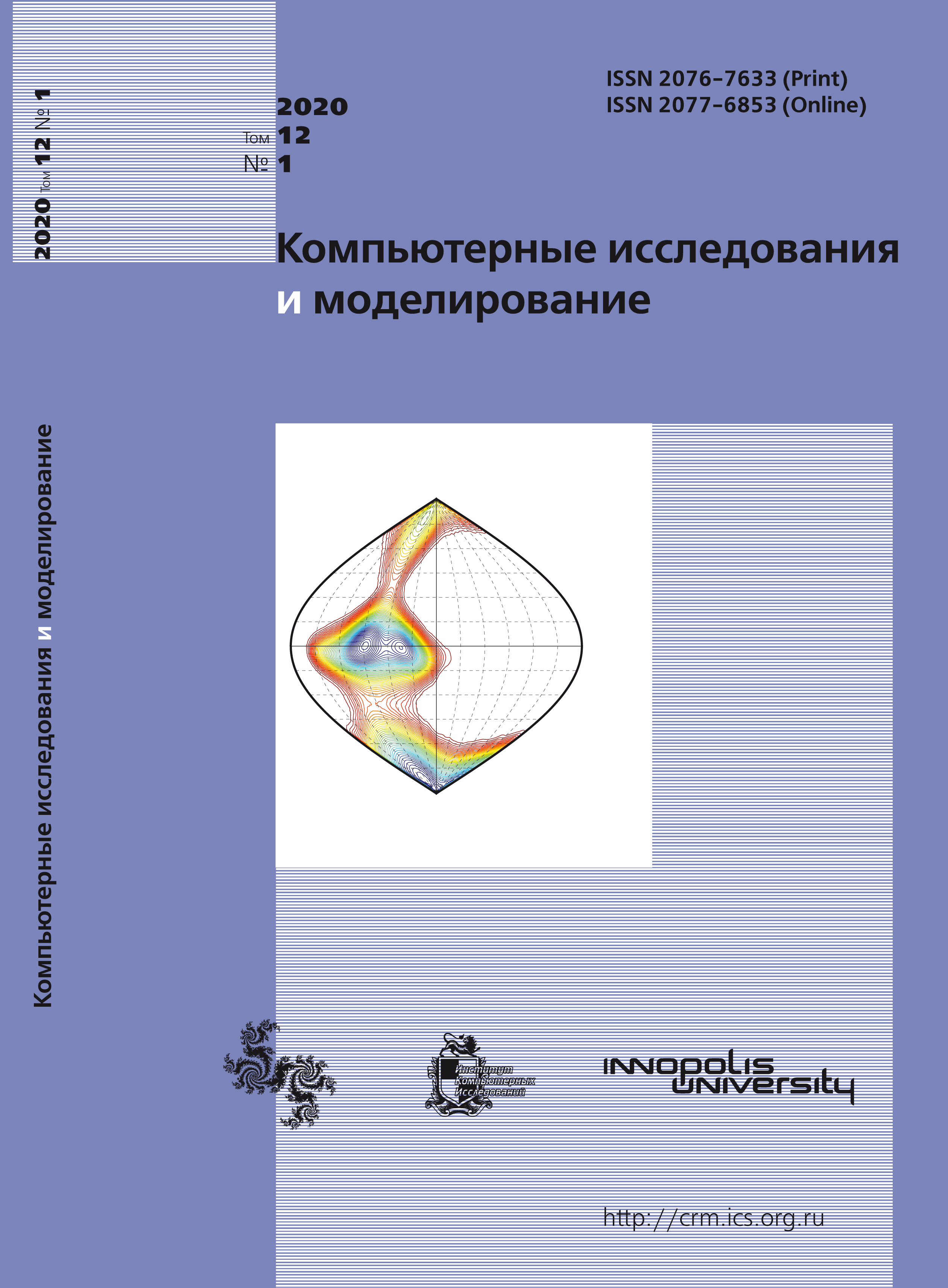All issues
- 2025 Vol. 17
- 2024 Vol. 16
- 2023 Vol. 15
- 2022 Vol. 14
- 2021 Vol. 13
- 2020 Vol. 12
- 2019 Vol. 11
- 2018 Vol. 10
- 2017 Vol. 9
- 2016 Vol. 8
- 2015 Vol. 7
- 2014 Vol. 6
- 2013 Vol. 5
- 2012 Vol. 4
- 2011 Vol. 3
- 2010 Vol. 2
- 2009 Vol. 1
A numerical method for solving two-dimensional convection equation based on the monotonized Z-scheme for Earth ionosphere simulation
 pdf (514K)
pdf (514K)
The purpose of the paper is a research of a 2nd order finite difference scheme based on the Z-scheme. This research is the numerical solution of several two-dimensional differential equations simulated the incompressible medium convection.
One of real tasks for similar equations solution is the numerical simulating of strongly non-stationary midscale processes in the Earth ionosphere. Because convection processes in ionospheric plasma are controlled by magnetic field, the plasma incompressibility condition is supposed across the magnetic field. For the same reason, there can be rather high velocities of heat and mass convection along the magnetic field.
Ionospheric simulation relevant task is the research of plasma instability of various scales which started in polar and equatorial regions first of all. At the same time the mid-scale irregularities having characteristic sizes 1–50 km create conditions for development of the small-scale instabilities. The last lead to the F-spread phenomenon which significantly influences the accuracy of positioning satellite systems work and also other space and ground-based radio-electronic systems.
The difference schemes used for simultaneous simulating of such multi-scale processes must to have high resolution. Besides, these difference schemes must to be high resolution on the one hand and monotonic on the other hand. The fact that instabilities strengthen errors of difference schemes, especially they strengthen errors of dispersion type is the reason of such contradictory requirements. The similar swing of errors usually results to nonphysical results at the numerical solution.
At the numerical solution of three-dimensional mathematical models of ionospheric plasma are used the following scheme of splitting on physical processes: the first step of splitting carries out convection along, the second step of splitting carries out convection across. The 2nd order finite difference scheme investigated in the paper solves approximately convection across equations. This scheme is constructed by a monotonized nonlinear procedure on base of the Z-scheme which is one of 2nd order schemes. At this monotonized procedure a nonlinear correction with so-called “oblique differences” is used. “Oblique differences” contain the grid nodes relating to different layers of time.
The researches were conducted for two cases. In the simulating field components of the convection vector had: 1) the constant sign; 2) the variable sign. Dissipative and dispersive characteristics of the scheme for different types of the limiting functions are in number received.
The results of the numerical experiments allow to draw the following conclusions.
1. For the discontinuous initial profile the best properties were shown by the SuperBee limiter.
2. For the continuous initial profile with the big spatial steps the SuperBee limiter is better, and at the small steps the Koren limiter is better.
3. For the smooth initial profile the best results were shown by the Koren limiter.
4. The smooth F limiter showed the results similar to Koren limiter.
5. Limiters of different type leave dispersive errors, at the same time dependences of dispersive errors on the scheme parameters have big variability and depend on the scheme parameters difficulty.
6. The monotony of the considered differential scheme is in number confirmed in all calculations. The property of variation non-increase for all specified functions limiters is in number confirmed for the onedimensional equation.
7. The constructed differential scheme at the steps on time which are not exceeding the Courant's step is monotonous and shows good exactness characteristics for different types solutions. At excess of the Courant's step the scheme remains steady, but becomes unsuitable for instability problems as monotony conditions not satisfied in this case.
Copyright © 2020 Kashchenko N.M., Ishanov S.A., Zinin L.V., Matsievsky S.V.
Indexed in Scopus
Full-text version of the journal is also available on the web site of the scientific electronic library eLIBRARY.RU
The journal is included in the Russian Science Citation Index
The journal is included in the RSCI
International Interdisciplinary Conference "Mathematics. Computing. Education"






